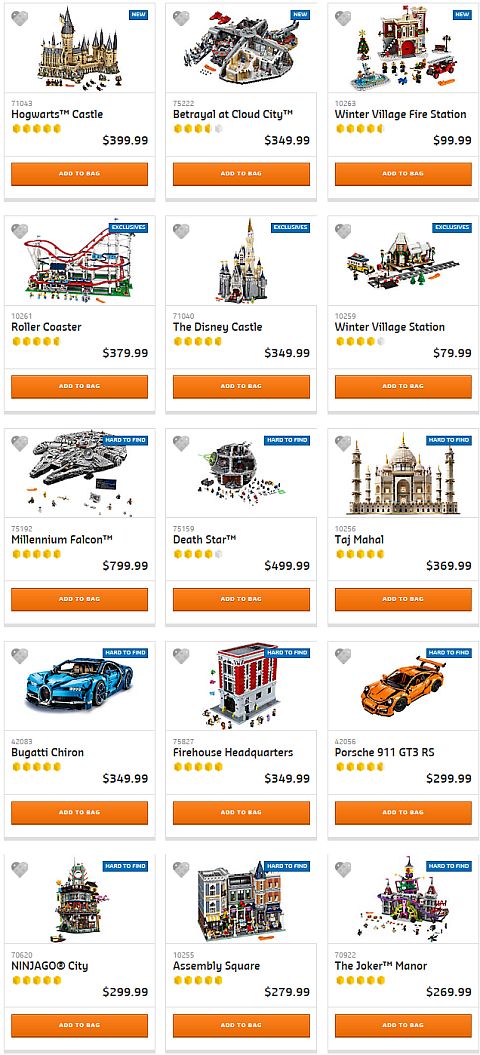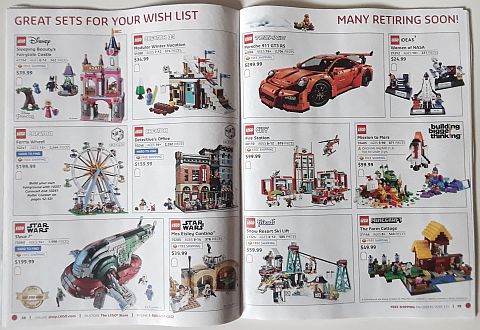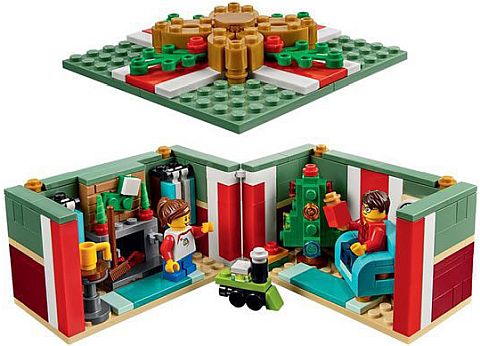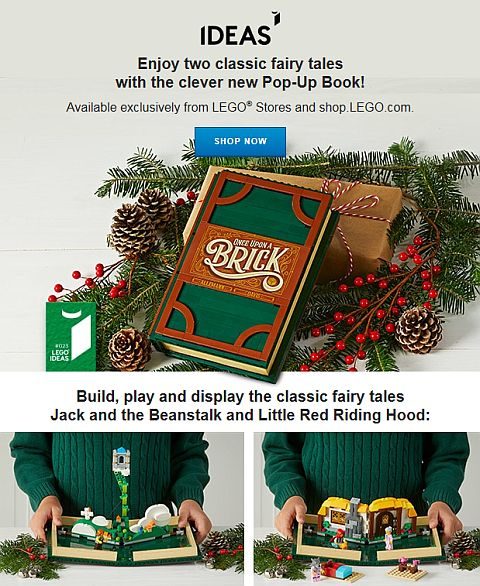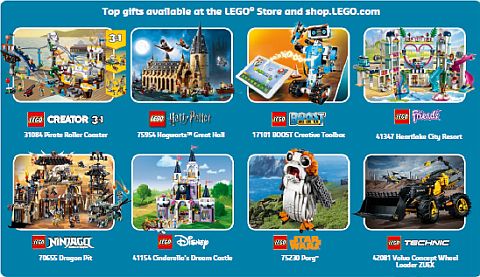I was recently introduced to an interesting LEGO compatible product that is currently on the last days of its Kickstarter campaign. Creator, Evan Grove, contacted me and asked if he could share a bit about the project with our readers. Evan also sent me a sample of his product, so I could test it out myself. I think it’s quite innovative, so I will let Evan tell you all about it. I will also include some of my thoughts at the end. 🙂
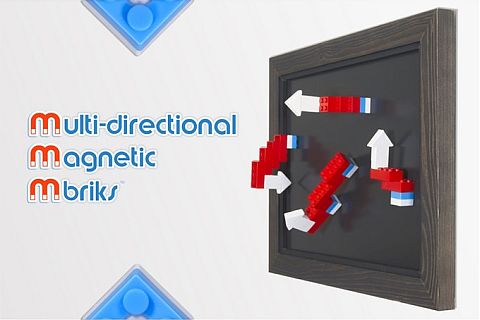
My name is Evan, and I am an inventor, entrepreneur, the father of two, and the creator of Mbriks – which is what I would like to introduce to you today. In a nutshell, Mbriks serve as versatile, multi-directional bridges between your LEGO creations and magnetically receptive surfaces. Below is a bit of back-story of how Mbriks came about, as well as our current Kickstarter campaign.
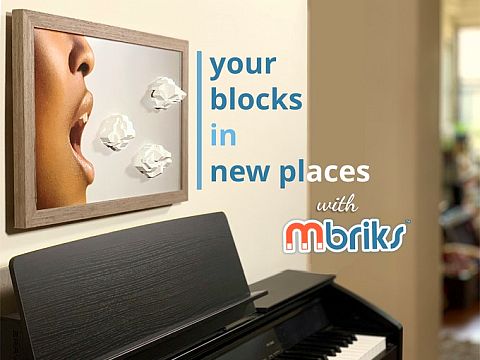
I’ve always loved LEGO blocks. Building with them… admiring what others have built… For myself, and for people across the world, LEGO blocks, (and their compatible cousins, MegaBloks, Kre-O, etc.), have become synonymous with creativity and “can-do-it-ness”. In designing Mbriks, I wanted to create a block accessory that would breathe new life into traditional block building; in particular, I wanted to create new ways to display new creations on new surfaces. Actually, starting out, my goal was much simpler; come up with a way to get my daughters excited about hanging out in the kitchen while I cooked dinner. (For, as any parent can attest, being able to keep an attentive eye on young kids while actually getting something done is a particularly satisfying form of Nirvana rarely achieved.)

My first thought was fridge magnets, but the simple picture ones were severely lacking in creative potential. A light blinked on in my head. I glued a magnet onto the underside of a LEGO block and began building up the side of the fridge. “Hmmm…”, I thought. This was a step in the right direction, but it still felt limiting. A magnetic construction block that only “sticks” on one side means building in only one orientation. How could I make all sides and edges “stick” without the pull force of each disrupting another? I puzzled on this for a few days… Finally, it hit me. My heart raced as I sketched out the imagined block’s interior. Over the next few weeks and months I refined the design. Finally, I enlisted professional help for the finishing touches. After many tweaks to the initial design, I couldn’t be more excited with the result! Magnetic and multi-directional, Mbriks truly lift your block creations to new heights!
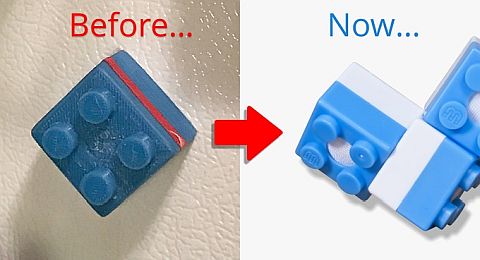
It’s been a quite a ride so far… At the moment, Mbriks are patent-pending around the globe and the manufacturing team and I have carefully refined our molds and assembly processes to create what we hope you’ll agree is a fantastic block. We’ve tested early production units for functionality and for compliance with consumer product standards (Mbriks are recommended for children 8 and up), and, as you can see from the pictures and videos here and at our Kickstarter campaign page, have had a ton of fun designing block creations for magnetic display. With all that said, we still feel we’re just scratching the surface of what can be done with Mbriks!

Thanks to their patent-pending design, Mbriks magnetically “stick” on all sides and edges, giving you greater flexibility with build orientation (“studs” up, out, tilted, upside-down, etc…) compared to other “alternative-display” methods, (e.g. Block “Tape”). Want to make your wall-mounted, LEGO + Mbriks creations really pop? Add context and depth to your 3D structures with eye-catching 2D backgrounds. Whether you draw, paint, or print, an Mbrik’s magnetic pull will connect to your magnetically receptive surface through paper or other thin media. With Mbriks, you’re no longer tethered to a grid of studs. Feel free to slide and rotate your creations until you’ve got things looking just right.
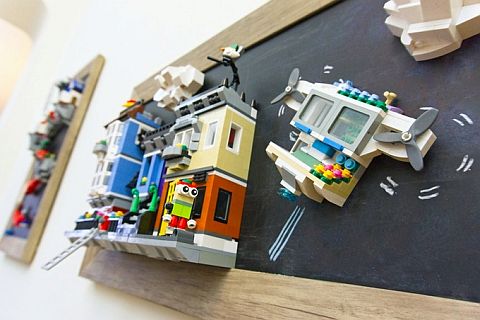
I’ve always thought that LEGO blocks are too awesome to be limited to floors and tabletops. With Mbriks, you get the double benefit of being able to display your block creations at eye-level while also freeing up floor and table space! For schools, this latter benefit is particularly helpful, as students can leave their creations on display without exhausting the floor and table space they need for other projects. (Want to donate a Class Pack of Mbriks to a school in need? Please check out the Class Pack pledge tier at our Kickstarter campaign page.) And a quick note to fellow parents; in addition to clearing up some floor clutter, Mbriks can be a great introduction to S.T.E.A.M. concepts (Science, Technology, Engineering, Art, and Math), as designing each artistic display requires careful consideration of gravitational, frictional, and magnetic forces.
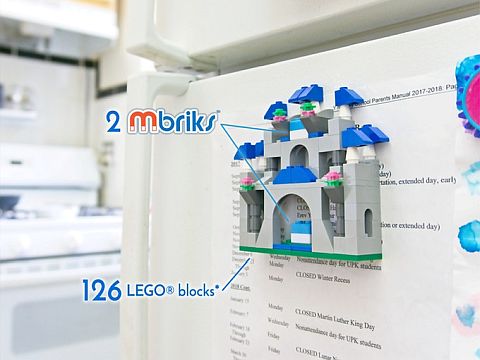
Perhaps you already have some magnetically receptive surfaces around your home (see the fridge door picture above). However, if you’re looking for more permanent, art-like displays that you can pair with both your block creations and background artwork, consider one of the custom displays offered through our Kickstarter campaign. Each one features a framed display surface carefully selected for magnetic receptiveness, high frictional coefficient, and write-ability.
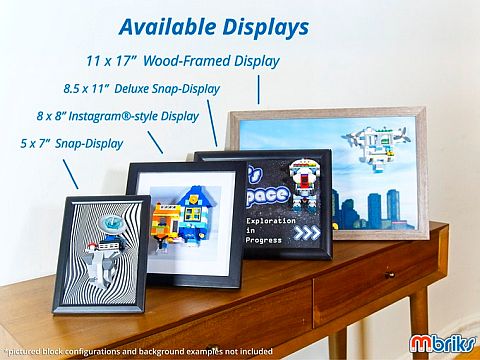
Thanks in part to a strong showing at the 2018 NY NOW Show in New York City, I’ve been able to find a manufacturer willing to front the production costs and produce Mbriks during our Kickstarter campaign. With production underway, we’re on target to ship out in time for the holidays! Thanks for reading about the benefits of Mbriks! If you’ve heard enough and just want to get your hands on some, please check out the reward tiers at our Kickstarter campaign page. We only have a few days left to meet our funding goal, but we are almost there. So, if you are interested, please pledge today and share our Kickstarter campaign page with others who might also lime Mbriks! With your help, we can bring these exciting new display capabilities to block lovers around the world!
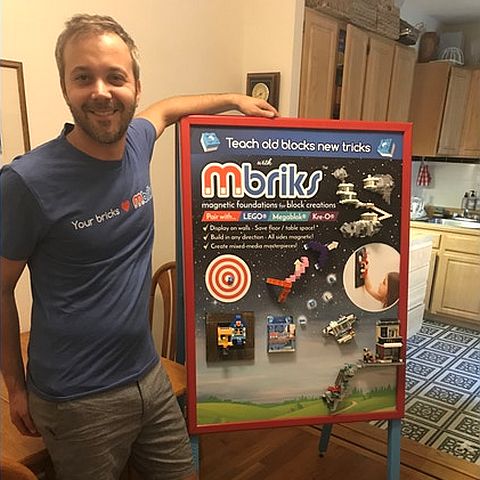
Pretty interesting, isn’t it? As far as my thoughts on the project, the sample I received included four Mbriks in an attractive packaging as well as a small magnetic frame. The bricks themselves are the same width and length as a standard LEGO 2×2 brick, but with slightly rounded corners. The height of Mbriks is the same as a LEGO 2×2 brick + a 2×2 plate. The size is a little odd, but I suppose it was necessary to fit in a strong enough magnet. Another odd feature is the unusual color of white and azure. I think that a more neutral color like gray, tan, white, or black would have been a better choice. But this is also just a minor issue.
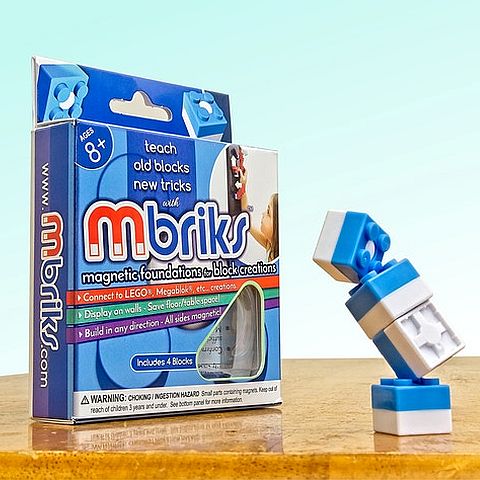
What I feel is a larger issue is that the top of Mbriks is open with what looks like a piece of cloth inside (to protect the magnet?). My guess is that the opening was added so that the magnet has a strong enough connection when attached studs-up to a surface. I do wonder how this open design will hold up to play and even just generic usage. Dirt, grime, and liquids can easily get inside the opening, damaging the cloth and the magnet. This is probably my biggest concern about the design. I would rather have the magnet fully enclosed with a slightly weaker connection at the top, and then just orient the bricks in a way that they have the strongest magnetic connection (sides, bottom), or even use more Mbriks. Other than these issues, Mbriks are good quality with strong magnetic power. Not as strong as earth magnets, but certainly strong enough to be able to hold up LEGO creations like the examples presented here. If you are interested, check out the Kickstarter campaign. There are only a few days left, so make sure you don’t miss out. Also watch the great introductory video that will show you lots of examples of how Mbriks could be used.

What do you think? How do you like Mbriks? Is this something you would like to try? How would you use the magnetic bricks? Feel free to share your ideas and discuss in the comment section below! 😉
And you might also like to check out the following related posts:




